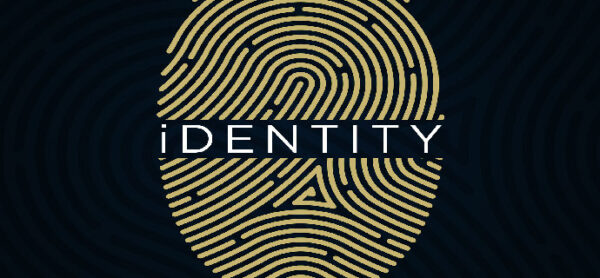The concept is based on the work of developmental psychologist Erik Erikson, who felt that one of the most fundamental problems that humans experience is the construction of identity. While acquiring a sense of identity is an important part of adolescence, Erikson did not believe that identity development and growth were limited to adolescence. Instead, identity moves and changes throughout life as people face new problems and encounter new experiences. Let’s look at the idea of identity foreclosure using an example.
What is Identity Foreclosure?
Identity foreclosure is a psychological concept that defines one of the important stages in the process of developing a sense of self that young individuals go through. Adolescents may absorb different traits and attributes from friends and family during this period. Meanwhile, they have not yet found their own.
Those in identity foreclosure have committed to a particular identity without first considering other choices. Younger adolescents will enter a period of foreclosure in which they may, at least initially, commit to one identity without investing in the exploration process. This commitment is often driven by anxiety about uncertainty or change in adolescence, as well as pressure from parents, social groups, or cultural standards. Most adolescents are predicted to grow beyond the foreclosure period because they can think independently and have many identity options. However, foreclosure can remain throughout late adolescence or even adulthood.
What Is Identity?
Identity refers to a person’s subjective sense of self, which includes their experiences, relationships, beliefs, values, and memories. This contributes to the development of a consistent self-image that remains relatively constant even if new components of the self emerge or are strengthened through time.
How Identity Forms
James Marcia, a researcher, elaborated on Erikson’s initial theory. According to Marcia and his colleagues, the balance between identity and confusion resides in committing to an identity.
Marcia created an interview method for measuring identity that examines three aspects of functioning: occupational role, beliefs and values, and sexuality. He also recognized four distinct identity states that people progress through as they shape their identity.
- Foreclosure State: When a person has made a commitment without striving to explore their identity.
- Identity attainment: This comes when a person has explored various identities and committed to one of them.
- Identity diffusion: This happens whether there is commitment or crisis. Those with an identity dispersal status frequently feel out of place in the world and do not pursue a sense of identity.
- Moratorium: This refers to the status of someone who is actively researching different identities but has not made a commitment.
Marcia contended that identity crises assist people in transitioning from one status to another. People, however, do not necessarily experience all of the above-mentioned states.
When Does Identity Foreclosure Take Place?
Identity foreclosure occurs when people believe they know who they are but have yet to investigate their choices. Perhaps they grew up in a Christian home and went to Christian schools. Hence, they spent much of their time with other Christians. They may identify as Christian without ever questioning their religious beliefs. They then leave home, encounter more different groups of people, study world religions at school, and decide to reconsider their religious convictions.
Identity foreclosure is similar to identity attainment. This occurs when a person has investigated their values, beliefs, professional interests, sexual orientation, political leanings, and other characteristics to develop an identity that is distinctively their own. Identity foreclosure, on the other hand, is not a true identity. It’s like putting on a mask.
In order to establish a real sense of self, a person frequently goes through an identity crisis, which is comparable to an identity moratorium. This is an investigation of a sense of self without commitment. Identity foreclosure occurs when a person commits to an identity too quickly without taking the time to examine their options on their own. Frequently, they have simply absorbed the characteristics and traits of a parent, close family, or respected friend.
It is critical for parents to support their children in developing their own identities, even if the identity that emerges does not totally align with their own. Children are not meant to be carbon copies of their parents. Rather, they should be unique individuals who have their own rights.
To advance past this stage, a person must build their own identity by questioning their characteristics and researching new options.
Identity Foreclosure Example
For an identity foreclosure example, consider a 12-year-old who claims to be a member of the political party that their parents support. They created this identity for themselves without questioning why or exploring other thoughts or options.
Or consider a woman who grows tall. She may be expected to become a supermodel. If she is in identity foreclosure, she will readily commit to becoming a supermodel. She may not even consider that her quickness and height could help her become a great soccer player.
People typically begin to question their identity in their late teens and early adulthood. This leads to a transition from this stage. An identity crisis can sometimes induce a person to exit the identity foreclosure stage.
People Who Are Most Likely to Suffer From Identity Foreclosure
Tweens are the most likely to be in identity foreclosure at any stage of identity formation.
A preteen, for example, may declare that they are politically conservative (their political identity). This happens despite the fact that they have not actively researched other options. They simply believed that they were on the right because that was their parents’ political identity.
However, as kids hit their late tween and adolescence, they may question their political convictions and experiment with alternative techniques. Through this investigation (identity embargo), they may finally acquire political identity achievement. This may or may not be conservative in nature, which will lead to identity achievement.
The Term’s Origins
Identity success is one of four identity statuses identified by James Marcia, a Canadian developmental psychologist. He questioned the notion that teenagers experience identity confusion. Instead, he asserted that they built identities through two processes: identity crisis and commitment.
Marcia’s writings on identity statuses were initially published in the 1960s. Ego Identity: A Handbook for Psychosocial Research contains a chapter on his work. Since then, psychologists have continued to expand on his findings.
Marcia came to his conclusions regarding identity development by reading the works of thinker Erik Erikson, who also wrote extensively about identity crises. Because discovering one’s identity is such an important element of personality development, their work on identity formation has left a lasting influence in the field of developmental psychology.
What Are the 4 Identity Statuses?
The four identity statuses are achieved, moratorium, foreclosed, and diffused.
What Influences a Person’s Identity?
Many internal and external elements influence identity creation and evolution, including society, family, loved ones, ethnicity, race, culture, location, opportunity, media, interests, appearance, self-expression, and life events.
What Is Lack of Self-Identity?
A person who lacks self-identity tends to follow the opinions of others. Their point of view may appear more appealing than your own (of yourself and others).



